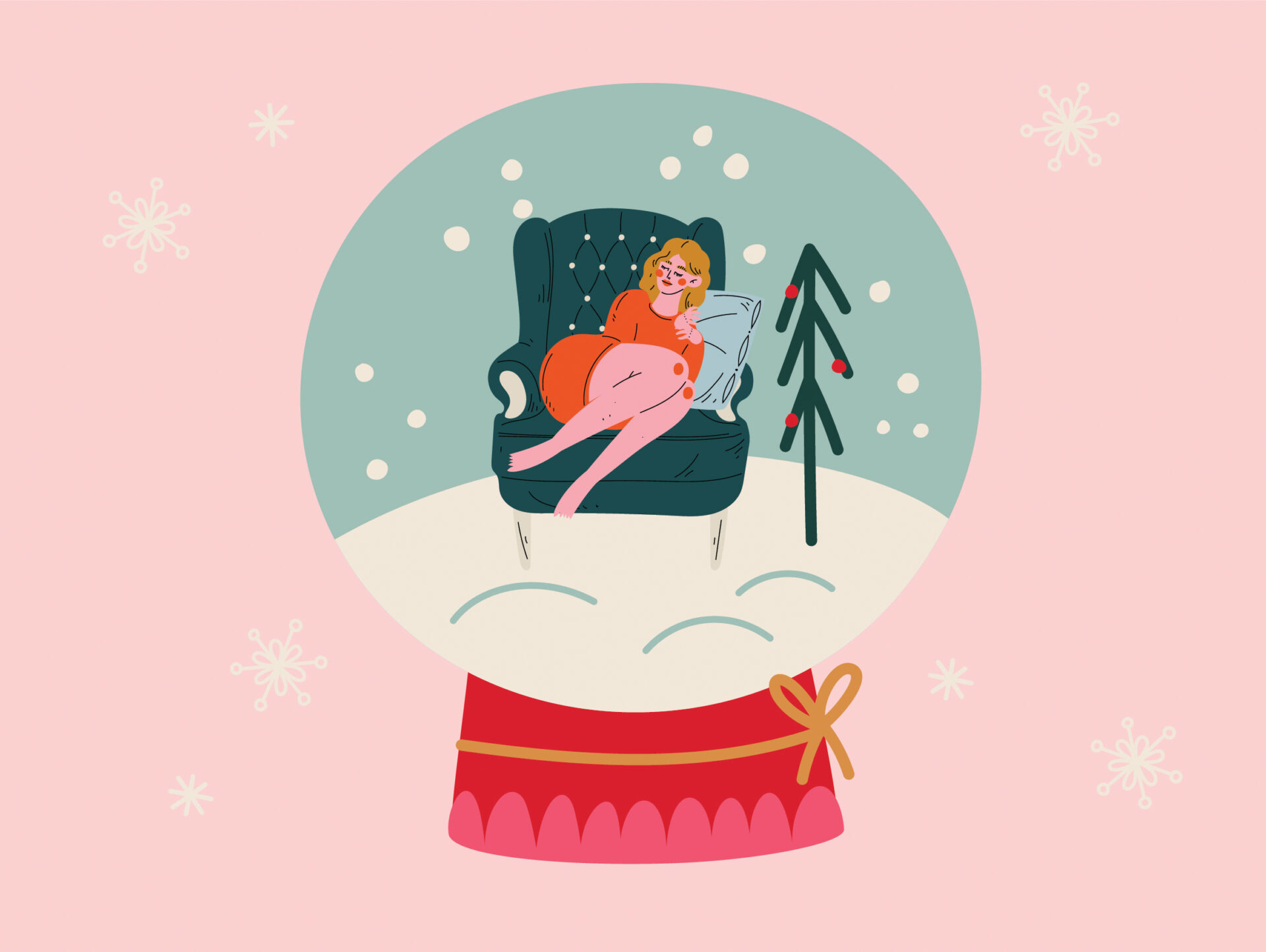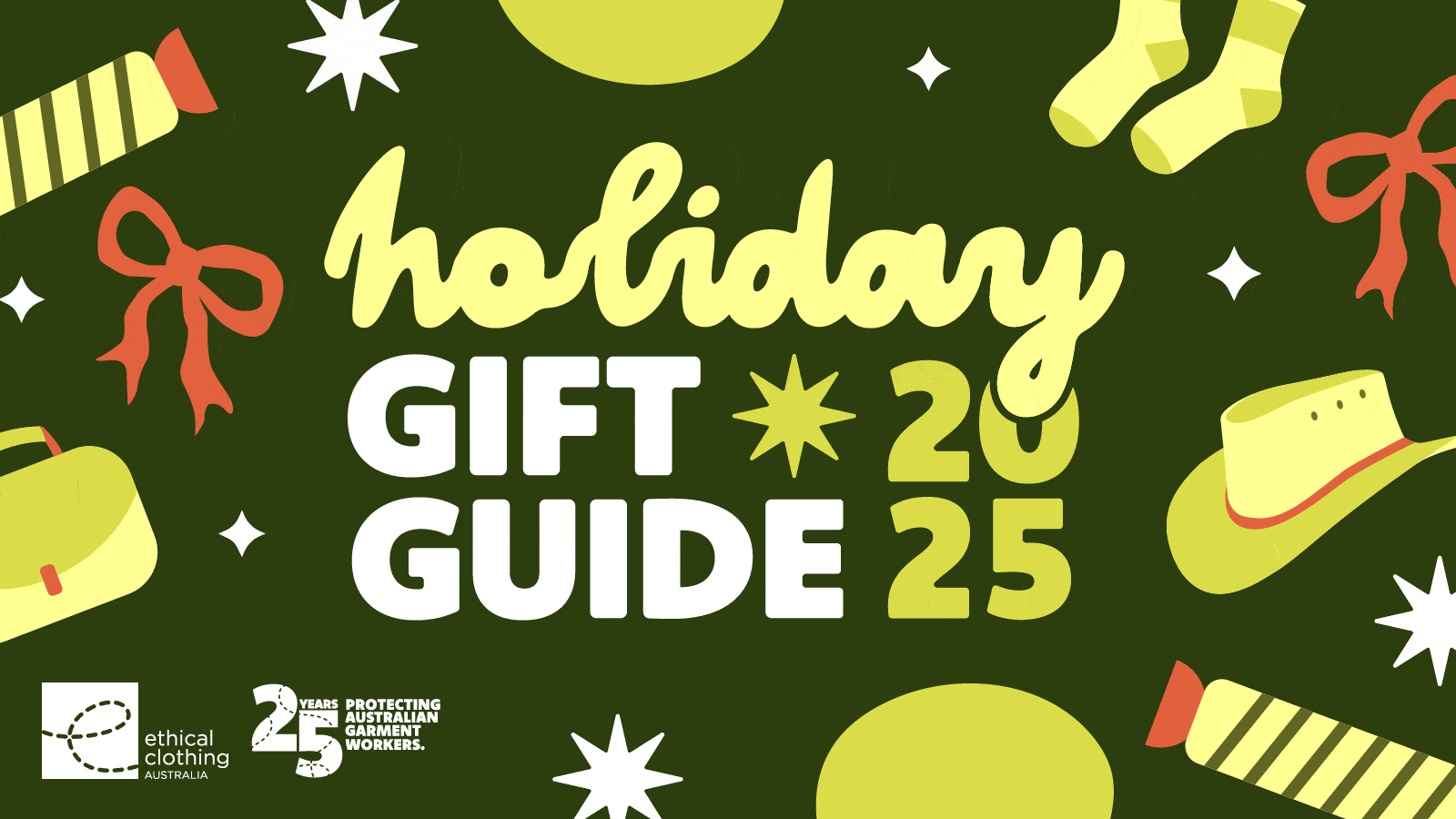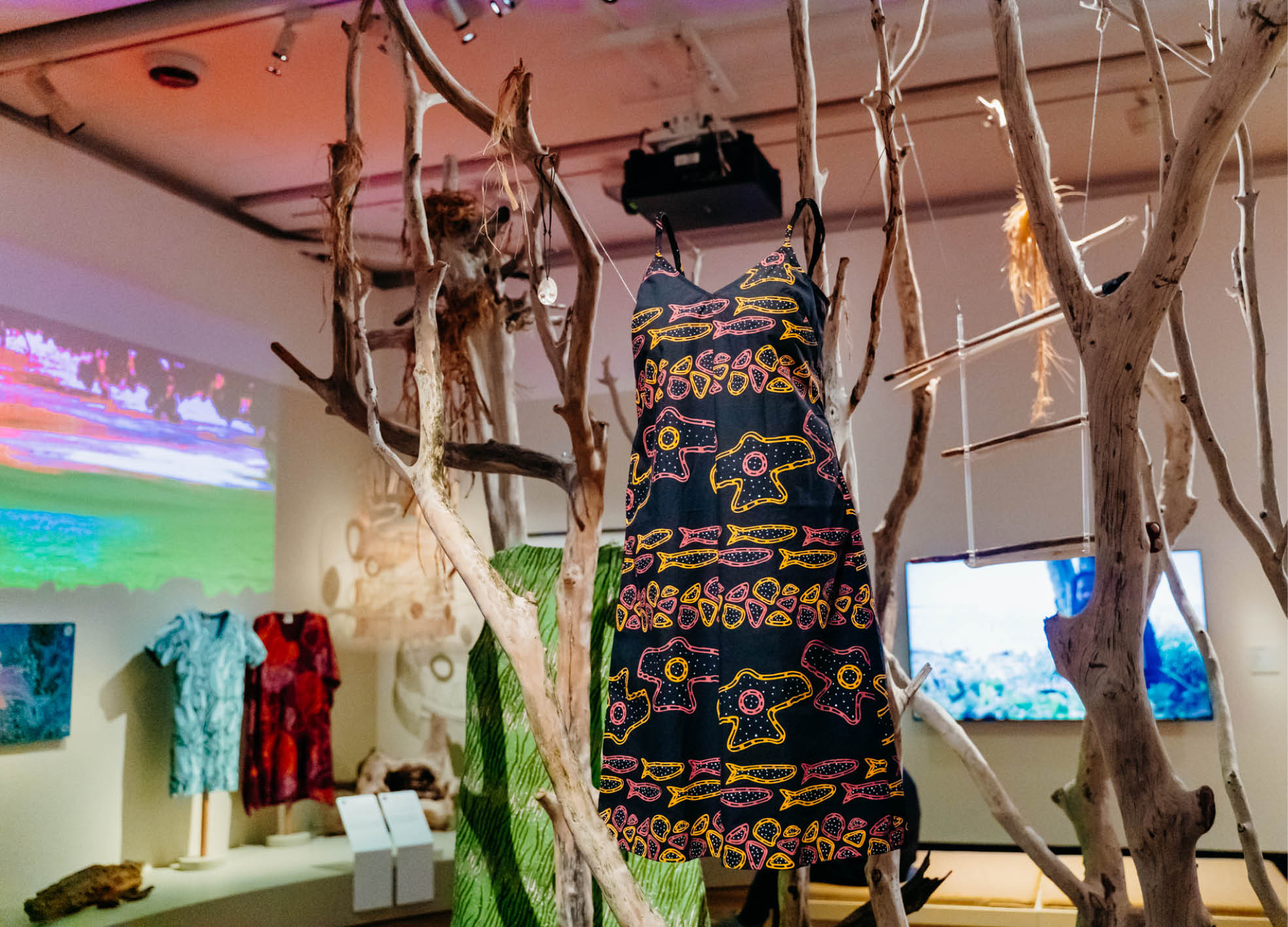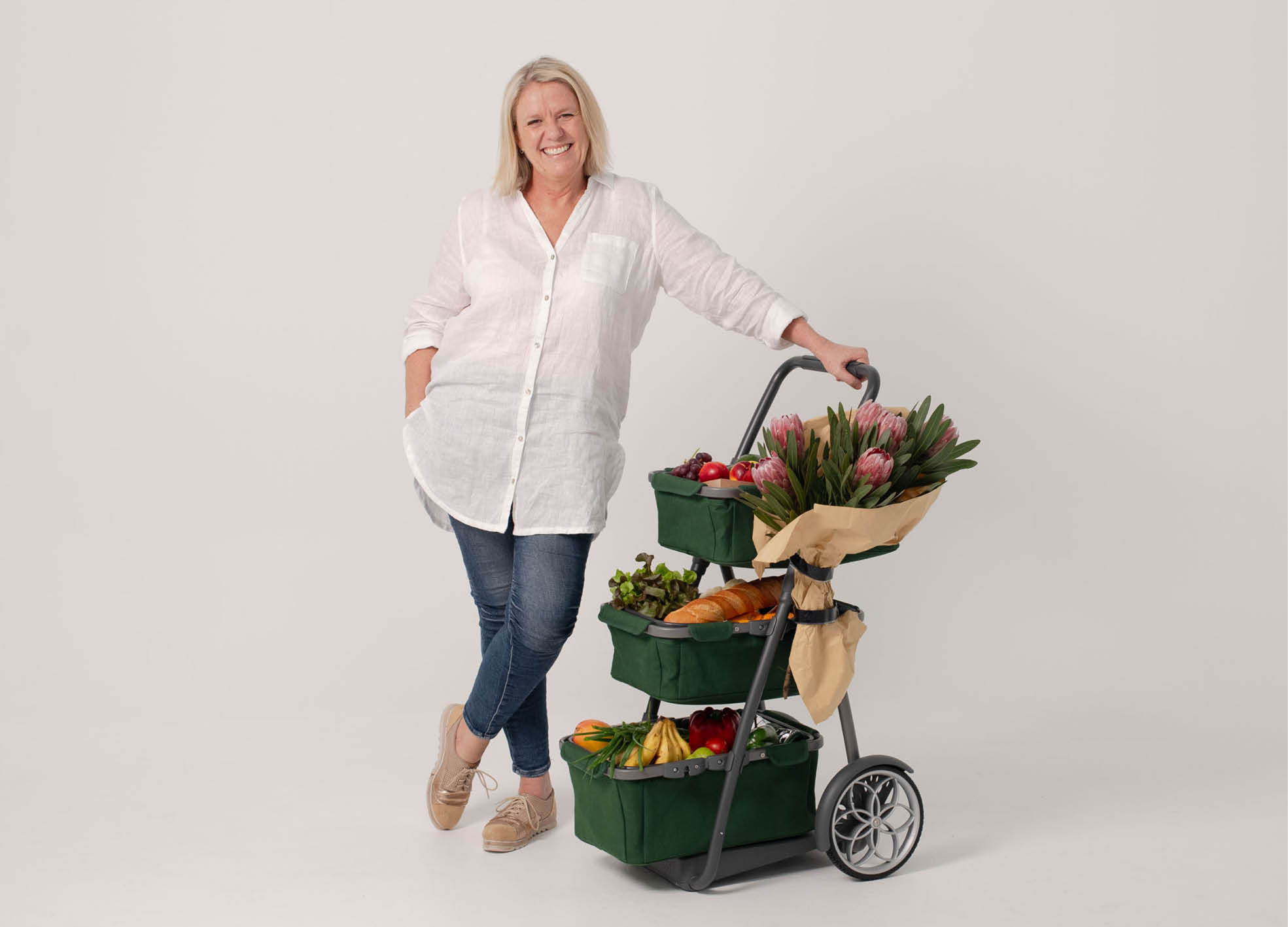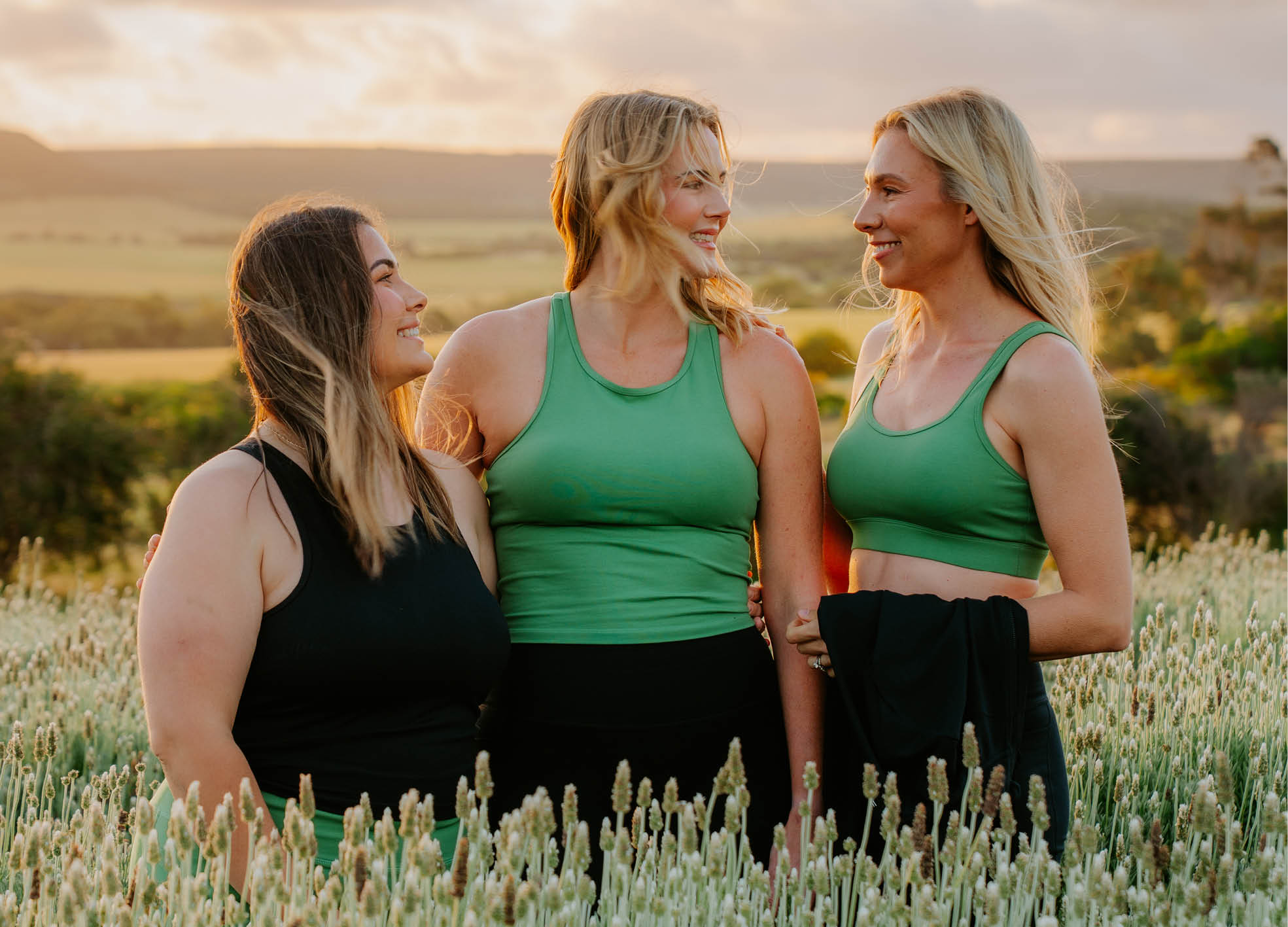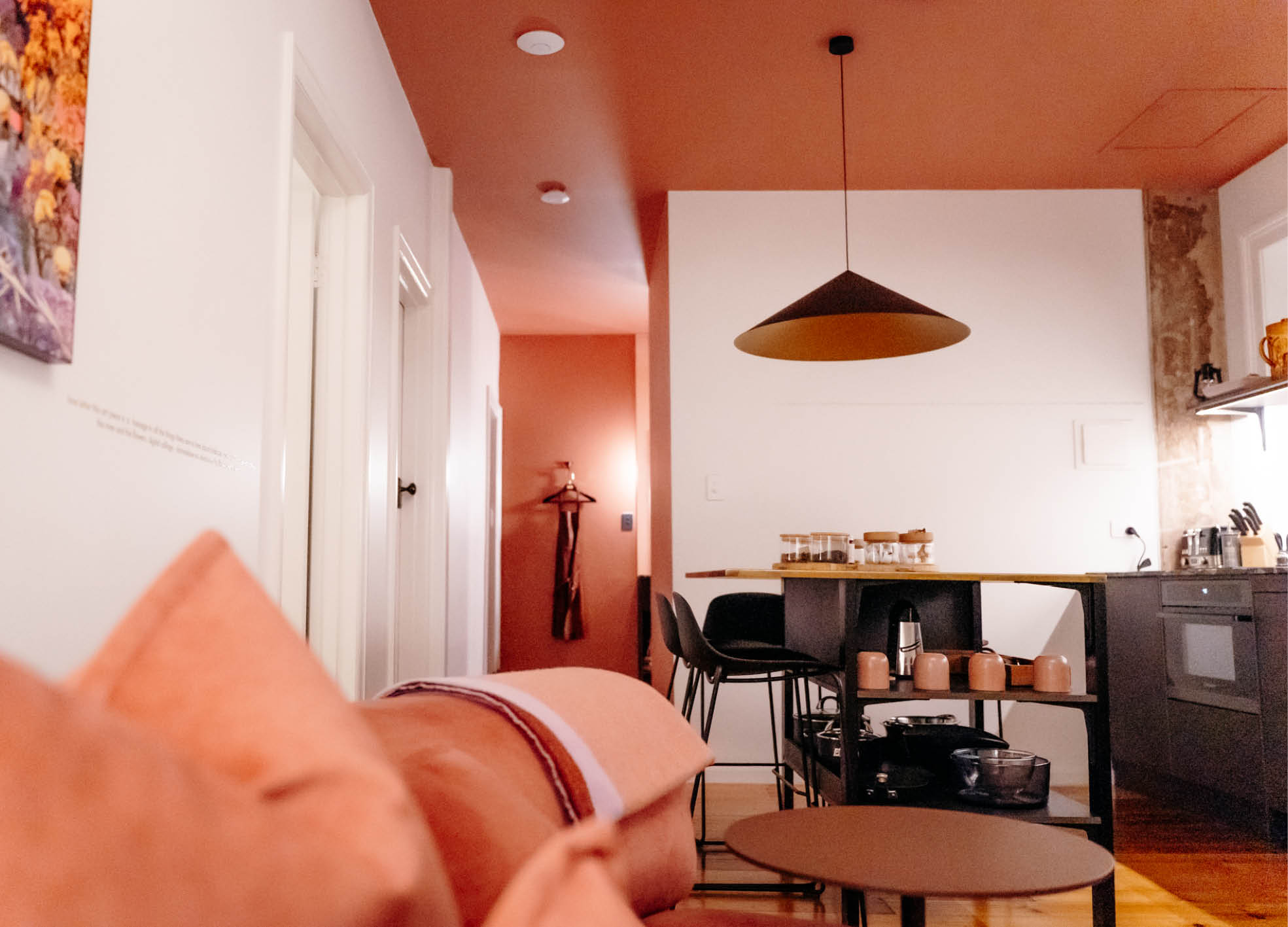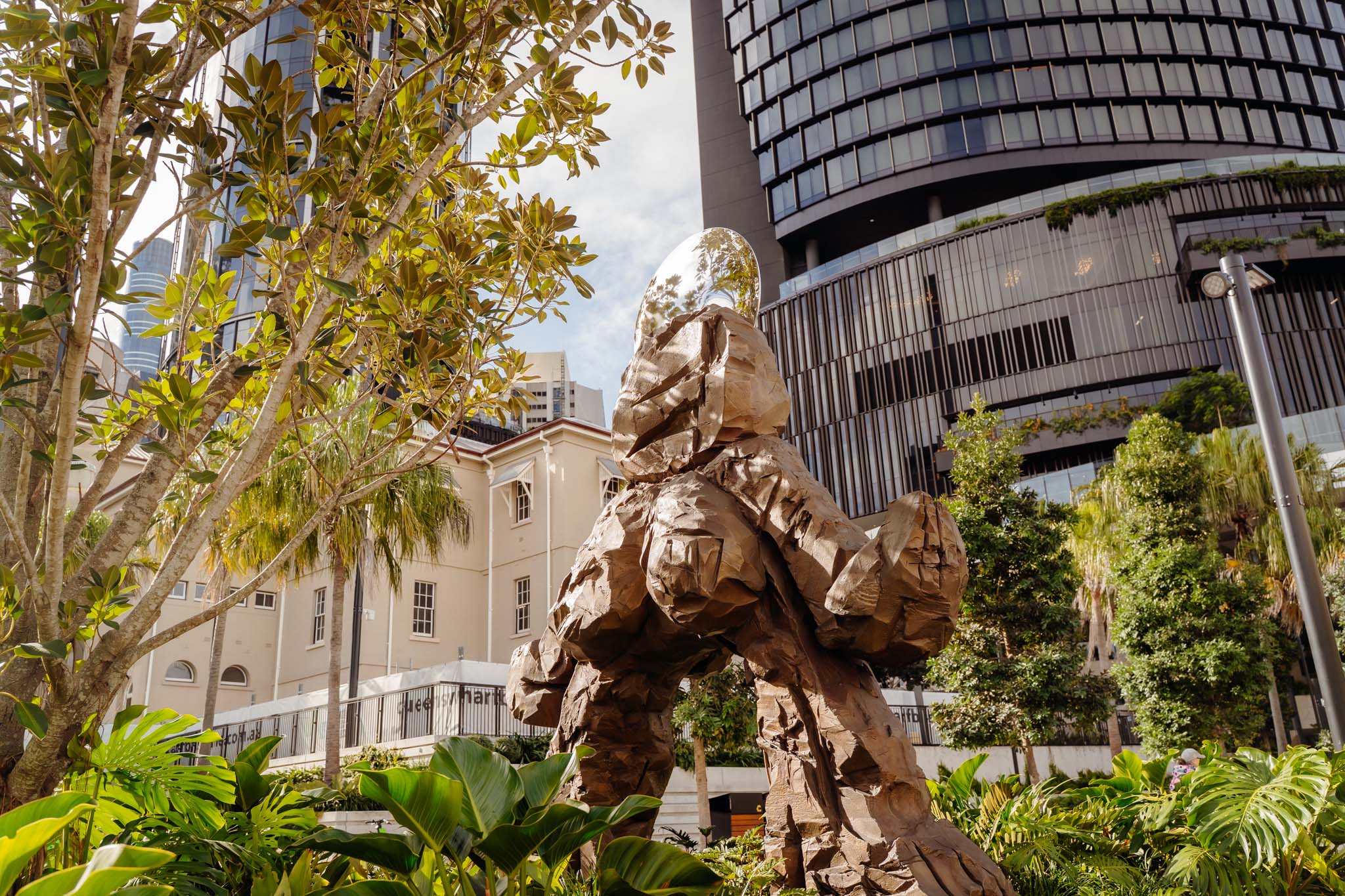Weaving Together Community and Culture “Connects Us All”
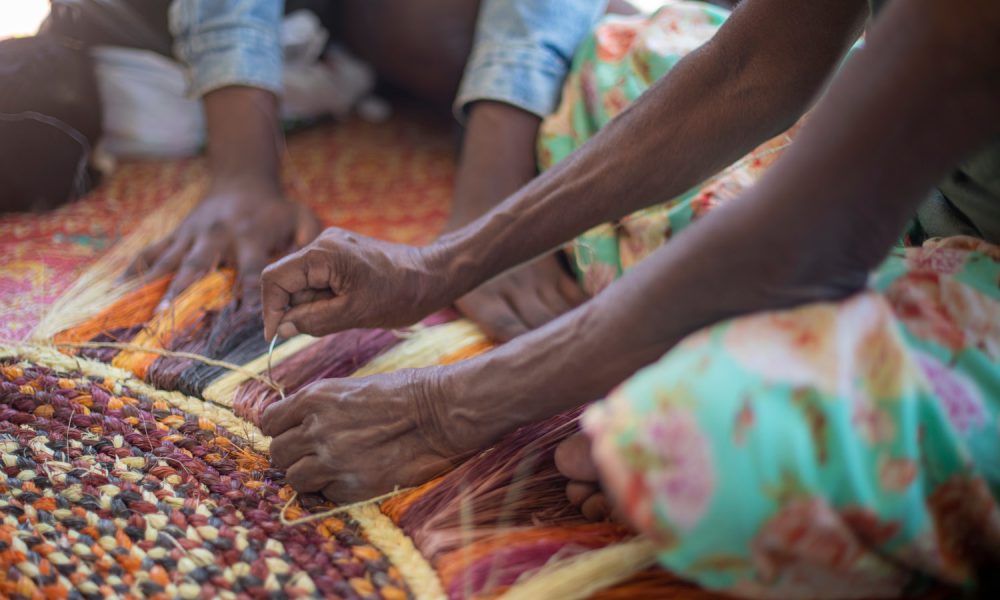
- Words by Peppermint
photos DURRMU ARTS
The National Indigenous Art Fair – an ethical marketplace of First Nations art, design, food and culture – will return to Sydney Harbour’s foreshore early next month to showcase artists, designers and makers from remote community art centres around the country.
In addition to the veritable feast of art and design stalls, the National Indigenous Art Fair will also present a dazzling program of live cultural experiences at The Rocks – including music and dance performances and a weaving circle.
“The National Indigenous Art Fair represents an incredible gathering of Aboriginal and Torres Strait Islander creatives from across Australia and all the different styles of art of those regions, with many artists travelling from the far corners of Australia – places like Aurukun in remote Queensland, and Ramingining, the Tiwi Islands and Yuendumu in the Northern Territory. It presents a rare and exciting opportunity for Sydneysiders to interact directly with the makers,” said Peter Cooley, CEO of First Hand Solutions Aboriginal Corporation, which organises the art fair.
Ahead of the event, we spoke with Regina Pilawuk Wilson, a Ngan’gikurrungurr woman and weaver from the Daly River region in the Northern Territory, who will be showcasing her work at the fair which runs across 1–2 July. For more information, visit the National Indigenous Art Fair website.

Tell us a little bit about yourself…
My name is Regina Pilawuk Wilson. I was born in Daly River, where my father used to run a peanut farm in the 1950s. I met my husband and we started the Peppimenarti community in 1973. It was a small community then, and we had little houses made of tin. I ran the shop and clinic. We taught culture to our kids every day which was the beginnings of our art centre: Durrmu Arts.
When I was young, my mother taught me how to weave, as her mother had taught her, and as I teach my children, grandchildren and great-grandchildren still today. The passing down of our culture, language and stories is important so that it is not lost. I have six children, over 50 grandchildren, and many great-grandchildren.
Pride in my culture motivates me to create. Getting into trouble for practising my culture and growing up at the missionaries makes me remember that we need to keep culture strong through practice and teaching others. Otherwise, it gets lost.
You founded Durrmu Arts and Peppimenarti, a community southwest of Darwin, with your late husband, Harold Wilson, in 1973. Tell us about this and why it was important to you?
My husband and I founded Peppimenarti after we met the two Traditional Owners who wanted help establishing a community where we could all practise culture. In the missionary days, we were taken away from our families and not allowed to speak in our language. There was no singing corroboree, and they stopped us practising our culture. That is why we founded Peppimenarti, to have a safe place where we could practise, be proud of our culture and teach it to the next generations.
Durrmu Arts was founded on the same principle. Durrmu is a Tyemirri word which means the way our ancestors used to paint on the rock and the paint used on our bodies during ceremonies. It is a special word in our culture, and that is why we called our art centre Durrmu Arts.
Peppimenarti was a cattle station before, so the men used to go and muster cattle. We built tin houses and I ran the clinic, shop and club. I used to give out medicine each morning to all the old people. We would teach the girls weaving under the trees and teach culture at the school every week. I used to run the powerhouse too, and do culture, lots of culture. The old men would take the boys out to do boomerang, didgeridoo and bark harvesting, to keep culture strong.
WANT MORE ARTS AND CULTURE? RIGHT THIS WAY!
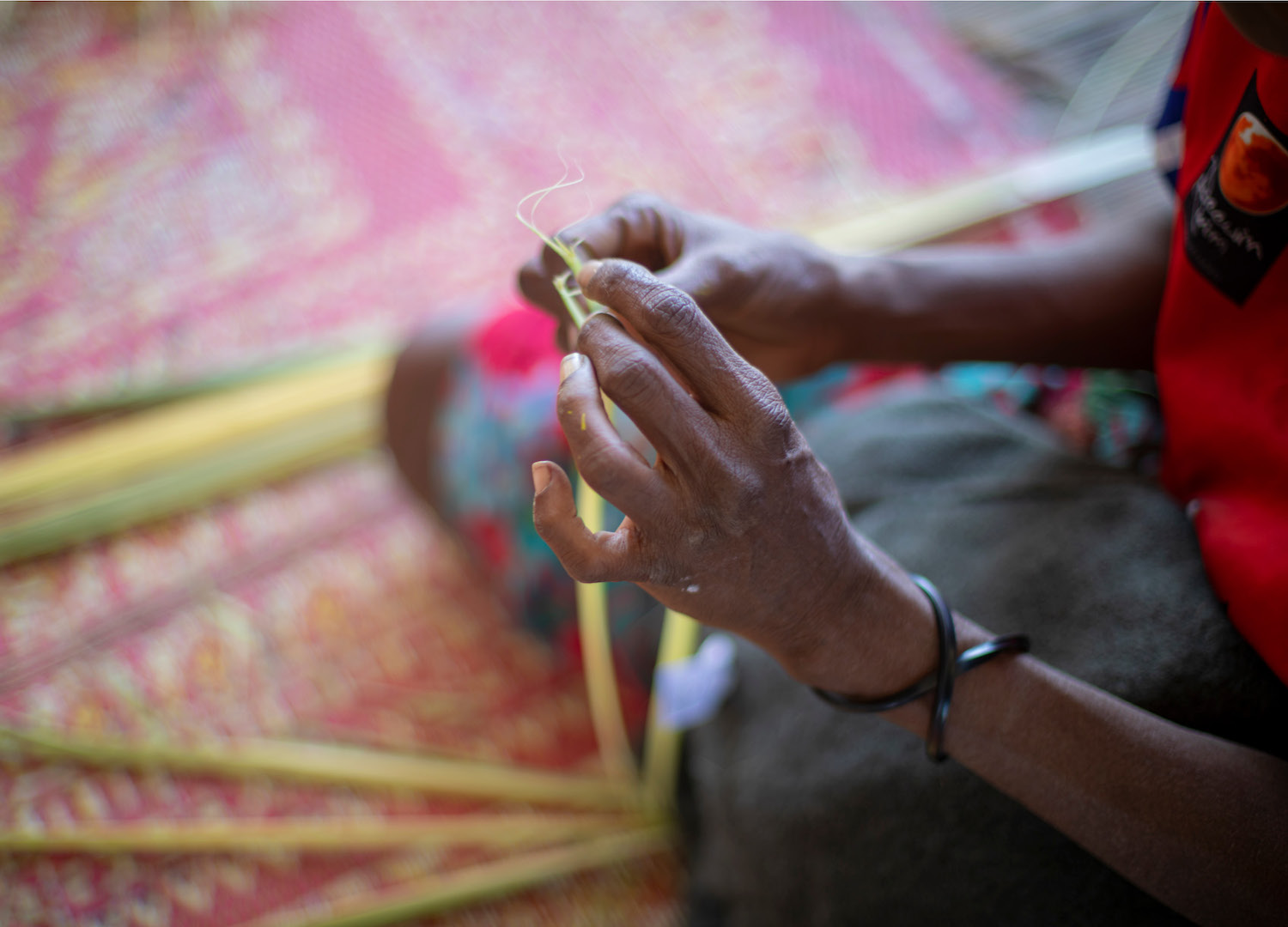
Talk us through your weaving process and the themes you explore through your work….
Weaving is passed down from generation to generation. It is a special connection to family and culture. Every community has a different stitch; my stitch was passed down from my grandfather. He used to make big fishnets to catch fish, the big mob in the creek. The fishnets are significant in our culture as they are a vessel and represent water and life.
Weaving connects us all together in many ways. It is something we share and connects us to our ancestors. Sitting on the art centre deck or under a tree and forming a weaving circle is a special time where we can all sit together and practise our culture, tell stories and keep culture strong.
What motivates you to create?
Pride in my culture motivates me to create. Getting into trouble for practising my culture and growing up at the missionaries makes me remember that we need to keep culture strong through practice and teaching others. Otherwise, it gets lost. I travel to communities teaching other women and children who have lost their culture from their ancestors. They ask me to go to their community to teach them, in Australia and overseas.
When you were little, your grandmother and mother taught you and your sisters to weave fishnets and dilly bags. How does your art practice connect you to them?
Weaving connects us all together in many ways. It is something we share and connects us to our ancestors. Sitting on the art centre deck or under a tree and forming a weaving circle is a special time where we can all sit together and practise our culture, tell stories and keep culture strong.
You are given your totems when you are born, and these are the stories you tell in your paintings. The weaving stitch, wupun, is mine.
Why do you believe events like the National Indigenous Art Fair are so important for you and other First Nations artists?
Art fairs and exhibitions are important to me because they allow us all to get together and to share our culture. We enjoy showing people all the different weaving styles and stitches to keep our culture alive.
There is huge pride in getting together and showing our culture. It is important to keep it up for the next generation. I recently travelled to Melbourne for an exhibition where my eight-year-old great granddaughter Taylor had her first mat on display. It was important for Taylor to see her weaving in an exhibition, and what it means. It is hard to explain in our remote community what an exhibition is to the little kids, you know? They see me weaving and painting on the art centre deck and at my house. But it is important for them to see where my work ends up and how they are displayed so we can be proud of our history and culture. That’s so we keep practising culture for all the next generations.
I have taught many, many girls how to weave over the years, and I am proud to do it. And I am still doing it today. I am proud to have an opportunity to teach my weaving practices and culture to you Sydney mob too! I want people to learn, listen and watch carefully so they can weave themselves and connect with me and my culture. I am so proud to teach our culture.
What do you wish more people knew about First Nations art?
They need to see our work and learn about our culture, the longest living culture in the world. We are proud to share our culture to different people and nations. Not everyone is allowed to paint any story in our culture; you are given your totems when you are born, and these are the stories you tell in your paintings. The weaving stitch, wupun, is mine.
JOIN OUR MAILING LIST
Brighten up your inbox with our not-too-frequent emails featuring Peppermint-related news, events, competitions and more!
explore
More articles
When you hang a painting on a wall, the story stays put. But when you wear a beautifully made garment that may as well be a piece of art? The story travels. It moves through the world with you –…
We all do it: fire up the car for a 5-minute drive to pick up groceries, drop off sewing supplies, or run a quick errand…
Here’s a question: who decided that natural fibres aren’t a great fit in activewear? For Geraldton mum-of-four Jade Payne, that question became paramount after a…
Fancy a getaway in a heritage building that was once a hospital, an orphanage AND a school in a previous life? Despite what your initial…
When the algorithm gods reward dance trends over hand-thrown ceramics, and building a website feels more stressful than a tax return, where’s a maker to…
Time-travelling lungfish floating in a mosaic of glass tiles, a four-breasted female empowerment goddess cast in bronze, and a striking botanical sculpture spanning 15 metres,…
Hang out with us on Instagram
“Crafting is something that has come naturally since I was small and I just haven’t stopped. When I was smaller, I was interested in the end result. As I’ve gotten older, I realise it’s the process that keeps me coming back to craft. It’s a meditative state for me and I find the repetitive action of the stitching and felting quite therapeutic.”
Craving a world filled with warmth and whimsy? It’s all in a day’s work for textile artist @Cat_Rabbit, whose latest book, ‘Trinkets’, is bursting with felty food friends to make and cherish. Cat invited us into her universe, filled with cheeky characters, layered storytelling and loads of humour.
Plus: try the super sweet pattern for Cat’s Lucky Pickle, perfect to make as a stocking stuffer, extracted from Trinkets.
Read more from our ‘Just felt right’ feature in Issue 64, at newsagents and stockists now!
Photos: Tatanja Ross @On_JacksonStreet and Cat Rabbit
#PeppermintMagazine #CatRabbit #LuckyPickle #Craft #Crafting #Felting #FeltCrafts #Trinkets #ChristmasDecorations

Our hearts go out to everyone impacted by the Bondi Beach violence, especially the Jewish community. Also to the beachgoers, those who bravely helped and the first responders.
While it`s easy – and understandable – to get caught up in the horror of it all and direct anger at certain groups, remember this quote from teacher and author Erin Gruwell: "Don`t let the actions of a few determine the way you feel about an entire group."
“You don`t fight racism with racism. You fight racism with solidarity," said Bobby Seale of the Black Panthers. And solidarity is exactly what we need right now.
If you are feeling overwhelmed, you are not alone. Remember there is much more kindness in the world than hate. ❤️🩹
@LifelineAustralia has created a Bondi Beach Incident: Wellbeing support guide, where you’ll find information about common reactions, reassurance that what you’re feeling is valid, and ideas for taking care of your wellbeing.
https://lifeline.org.au/bondi-incident
You can also call Lifeline on 13 11 14, text on 0477 13 11 14 or chat at lifeline.org.au/crisis-chat anytime, no matter how this has impacted you.
@BeyondBlueOfficial is also available with free 24/7 support by phone on 1300 22 4636 or webchat at https://www.beyondblue.org.au/
Register.Find.Reunite. has been activated by @RedCrossAu to help people reconnect with family and friends. Visit redcross.org.au to access the service.
@NSWPolice Public Information and Inquiry Centre (PIIC) is operating 24/7 on 1800 227 228 for information relating to people impacted.
@LifeBloodAu is supporting Sydney hospitals. O- and O+ blood are always in high demand in emergencies. To donate (from anywhere in Australia – all states are welcome and helpful!) call 13 14 95 or use the Lifeblood app.

Just a reminder… from @SugarHouseCeramicCo
This holiday season be kind, patient and shop local!
#ShopSmall #ShopLocal #SupportSmallBusiness

✨️ Our website is getting a glow-up! ✨️
Sorry for the inconvenience but it will be offline for a few days. You can still purchase subscriptions (perfect for chrissy presents!) via the links on the holding page.
Last year we were extremely excited to receive funding from the Meta Australian News Fund, in partnership with the Walkley Foundation. The result of this is a fabulous new website, with a sustainable fashion and sewing directory that will follow early next year. We`ve worked with the lovely Amy and Jenny at @CrumpetClubHouse who have been making the magic happen – we can`t wait to show you the outcome! ✨️
In the meantime, please get in touch if you need help with anything – hello@peppermintmag.com
We`ll see you on the other side! 🌈

🎀 12 DAYS OF XMAS GIVEAWAYS 🎀
🎄On the 12th day of Christmas, we’re giving away… a GREENPAN FROST ICE CREAM & FROZEN DRINK MAKER! 🎄
Ice, ice, baby! Calling all kitchen magicians and dessert devotees: it’s time to churn, blend and devour your way to frozen heaven. It’s our final giveaway – and hoo girl, it’s a goodie! Thanks to the clever folks at @TheOriginalGreenPan.Anz, one reader will cool their mitts on the Frost Ice Cream & Frozen Drink Maker – perfect for conjuring up home-made gelato, sorbet, smoothies, slushies and more!
Valued at $599, the Frost Ice Cream & Frozen Drink Maker is designed with GreenPan’s signature Thermolon™ ceramic non-stick coating, so you can whip up summer-ready sweet treats free of PFAS, PFOA, lead and cadmium.
To snag this frosty prize, follow @TheOriginalGreenPan.Anz and tag a friend in the comments below before midday AEST 15 December! (Australian and New Zealand addresses only, please.) Good luck!
Update: The lucky winner of our final giveaway is @just__for__van - congrats! We`ll dm to get your details. Well done! 🎉
#PeppermintMagazine #12DaysOfChristmas #12DaysOfGiveaways #GreenPan

Oh hey 👋🏼 Just a little reminder that our subscriptions are sent in paper envelopes, which is a bit of a rarity in our industry. 💅🏼
If you need more reasons to subscribe, how about these:
💌 Enjoy a new issue arriving in your letterbox every six months.
💌 Subscribers exclusively receive FOUR digital sewing patterns per year!
💌 You’ll be the first to get your hands (and needles) on our patterns with early access.
💌 Get a 20% discount code on back issues of Peppermint so you can start your collection today!
💌 Automatically go in the draw to win amazing prizes each issue.
💌 Feel good about your subscription arriving in plastic-free postage.
💌 Support a small, women-led Australian business.
💌 Help us make the world a better place!
And... it`s a perfect Christmas present! We have a downloadable card you can print to go with your gift.
💌 Link in bio!
#PeppermintMagazine #SupportSmallBusiness #ShopLocal #ShopSustainable #PlasticFree








